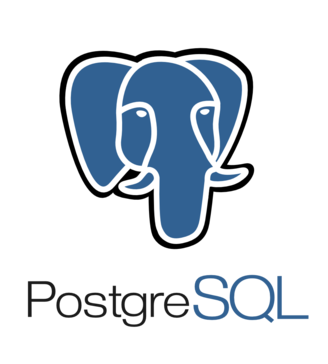PostgreSQL, a robust and versatile database management system, plays a pivotal role in handling diverse data types. Among these, BYTEA and String data types are particularly significant for developers and database administrators. This article delves into the nuances of converting BYTEA to String, a common yet critical operation in PostgreSQL. We will explore the definitions, characteristics, and the overarching importance of this conversion process, providing insights that are essential for efficient database management.
Table of Contents
Understanding BYTEA and String Data Types in PostgreSQL
BYTEA Data Type: A Closer Look
The BYTEA data type in PostgreSQL is designed for storing binary data. It’s a flexible format that can handle a wide range of binary data, from images to large blobs of text. The key features of BYTEA include:
- Binary Storage: Ideal for data that doesn’t fit traditional data types.
- Variable Length: Can store data of varying sizes, making it versatile.
- Escape Sequences: Represents binary data in an escaped format, enhancing readability.
String Data Types: Versatility in Text Storage
String data types in PostgreSQL, such as VARCHAR, CHAR, and TEXT, are used for storing textual data. Their characteristics include:
- Fixed and Variable Length: CHAR is fixed-length, VARCHAR is variable-length, and TEXT has unlimited length.
- Character Encoding Support: They support various character encodings, ensuring compatibility with different languages and symbols.
- Efficiency in Text Handling: Optimized for operations like searching and sorting textual data.
The Role of Data Type Conversion
Converting data from BYTEA to String is more than a technical necessity; it’s a strategic approach to data management. This conversion is crucial for:
- Data Accessibility: Converting binary data to a readable string format makes it accessible for analysis and reporting.
- Interoperability: Ensures compatibility with systems that require data in a string format.
- Data Integrity: Proper conversion techniques preserve the original data’s integrity, ensuring reliable data storage and retrieval.
In the following sections, we will further explore the practical aspects of converting BYTEA to String in PostgreSQL, ensuring that you have a comprehensive understanding of this essential process.

Why Convert BYTEA to String?
In PostgreSQL, the conversion from BYTEA to string is often necessitated by specific scenarios and offers distinct benefits. Common situations include:
- Data Reporting: When binary data needs to be included in text-based reports.
- Application Requirements: Some applications can only process string data, necessitating this conversion.
The benefits of converting BYTEA to string are significant:
- Enhanced Readability: Converting binary data to a string format makes it more readable and understandable.
- Data Manipulation: String data is easier to manipulate, allowing for more straightforward data processing and analysis.
Step-by-Step Guide to Convert BYTEA to String

Pre-requisites for Conversion
Before converting BYTEA to string, ensure that:
- Your PostgreSQL environment is set up and accessible.
- You have the necessary permissions to execute SQL queries on the database.
Conversion Process
The conversion involves a series of steps, each critical to the success of the operation:
- Prepare Your Data: Identify the BYTEA data that needs conversion.
- Use the
encodeFunction: PostgreSQL provides theencodefunction for this conversion. The basic syntax is:
SELECT encode(bytea_column, 'escape') FROM your_table;This query will convert the binary data in bytea_column to a human-readable string format.
- Error Handling: Be aware of potential errors such as data format mismatches. Ensure that the data you’re converting is compatible with the string format.
- Data Integrity Checks: After conversion, verify that the data remains intact and unchanged.
- Performance Considerations: Large data conversions can impact database performance. Monitor and optimize the query performance if necessary.
By following these steps, you can effectively convert BYTEA to string in PostgreSQL, facilitating better data management and utilization.
Best Practices for BYTEA to String Conversion
When converting BYTEA to string in PostgreSQL, adhering to best practices is crucial for ensuring data integrity and optimal performance. Key considerations include:
- Data Integrity: Always verify the converted data against the original BYTEA data to ensure accuracy.
- Performance Optimization: For large datasets, optimize your queries to minimize the load on the database.
- Efficient Conversion Techniques: Use built-in PostgreSQL functions like
encodeanddecodefor reliable conversions.
Common Challenges and Solutions
In the process of converting BYTEA to string, several challenges may arise. Here’s a table outlining common issues and their solutions:
| Issue | Solution |
|---|---|
| Data Corruption | Implement checks to compare the original and converted data. Use error handling in your SQL queries. |
| Performance Bottlenecks | Optimize queries, index relevant columns, and consider breaking large tasks into smaller batches. |
| Incompatible Character Encoding | Ensure the character encoding is consistent throughout the database and application layers. |
By understanding and addressing these challenges, you can ensure a smooth and efficient BYTEA to string conversion process in PostgreSQL.
FAQs
How does encoding affect BYTEA to String conversion in PostgreSQL?
Encoding plays a crucial role in the conversion process. PostgreSQL uses specific encoding formats like ‘escape’ or ‘base64’ in the encode function. The chosen encoding affects how binary data is represented as a string, impacting readability and compatibility.
What are the risks involved in converting BYTEA to String?
Risks include potential data corruption if the conversion is not handled correctly, and data loss if the string representation does not accurately reflect the binary data. Ensuring proper encoding and thorough data validation is key to mitigating these risks.
Can BYTEA to String conversion impact database performance?
Yes, especially with large datasets. Conversions can be resource-intensive, potentially leading to performance bottlenecks. It’s important to optimize queries and consider the database’s load when performing such operations.
Are there any specific PostgreSQL versions that handle BYTEA to String conversion differently?
While the fundamental process remains consistent, newer PostgreSQL versions may offer improved functions and more efficient handling of data types. It’s advisable to refer to the specific version’s documentation for any nuanced differences
Conclusion
The conversion from BYTEA to string in PostgreSQL is a vital process for data management and analysis. Understanding its intricacies, adhering to best practices, and being aware of potential challenges ensures efficient and accurate data handling. Embrace these practices to leverage the full potential of your PostgreSQL database.
Additional Resources
For further information and guidance, consult the PostgreSQL Documentation. Additionally, tools like pgAdmin and extensions specific to data type conversion can be invaluable in managing these processes effectively. It’s crucial to ensure that your database remains optimized for performance and speed. One method to achieve this is by regularly reindexing tables in PostgreSQL, which helps reclaim space and improve query performance.

